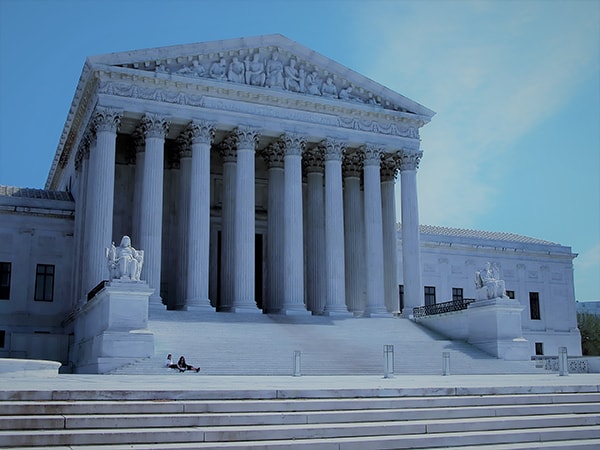Demystifying the Refine of Federal Appeals: What You Required to Know
Browsing the intricate world of government appeals can frequently look like going across undiscovered waters for those unfamiliar with the procedure. Understanding the subtleties of appellate court jurisdiction, the complexities of filing a notice of charm, presenting an engaging short, and making a persuasive oral argument are essential parts that can substantially impact the outcome of a situation. By deciphering the layers of intricacy bordering government appeals, people can get a more clear understanding into the devices that govern this important phase of the lawful system.
Comprehending Federal Appeals Process
Exploring the intricate realm of the government charms procedure unveils a systematic and organized journey via the judicial system. Federal charms function as a critical mechanism for examining decisions made by reduced courts. Recognizing this process is essential for anyone associated with legal process at the federal level.
The process usually begins with an event dissatisfied with a lower court's ruling submitting a notice of charm. This causes a testimonial by a greater court, where a panel of judges assesses the lawful debates presented by both parties. Briefs laying out the lawful reasoning behind each celebration's position are submitted, and dental disagreements might be heard to clarify complex issues.
The appellate court's choice is based on an extensive examination of the reduced court's process and the debates provided. When the appellate court reaches a decision, it can attest, reverse, remand, or modify the reduced court's ruling, offering clearness and finality to the lawful dispute.
Appellate Court Jurisdiction Described
Appellate court jurisdiction refers to the range of cases that a specific appellate court has the power to determine and evaluate upon. Unlike test courts that listen to cases for the very first time, appellate courts are restricted to evaluating choices made by reduced courts.
Appellate courts have jurisdiction over particular sorts of cases, typically those including lawful errors, step-by-step problems, or concerns of legislation as opposed to accurate conflicts. The territory of appellate courts is typically described in laws and laws that govern the court system. Recognizing appellate court territory is important for parties entailed in the charms process as it determines whether an instance is eligible for review and the extent to which the appellate court can intervene in the reduced court's decision.
Declaring a Notice of Allure
The preliminary action in beginning the government allures process entails submitting a Notification of Appeal with the appropriate appellate court. This crucial record officially alerts the court and the other celebrations associated with the instance that the appealing party intends to look for an evaluation of the lower court's decision. Filing a Notice of Charm is a stringent procedural demand that establishes the appellate process moving.
When preparing the Notice of Appeal, it is important to guarantee compliance with the details rules and standards of the pertinent appellate court. federal crime lawyer. The document must usually consist of details such as the instance name, the reduced court's name, the date of the judgment being appealed, and a concise declaration indicating the premises for the charm

Briefing and Dental Argument
In the appellate procedure, presenting composed briefs and taking part in oral debates play essential functions in promoting for the appealing party's placement prior to the appellate court. Briefs are extensive legal documents that describe the parties' debates, lawful authorities, and evaluation supporting their settings. These created entries offer the court with a thorough understanding of the realities of the situation, the appropriate legislation, and why the appealing celebration believes the reduced court's decision need to be rescinded.
Adhering to the entry and review of the briefs, dental arguments supply the events a chance to additional clarify their positions, deal with any type of concerns the appellate courts may have, and highlight vital points from their created briefs. Oral arguments are a chance for the attorneys to persuade the judges through spoken advocacy and actions to questions from the bench.
Both the composed briefs and oral debates are essential elements of the appellate procedure, enabling events to provide their instance completely and compellingly before the appellate court. - federal appeal attorneys
Obtaining the Appellate Court Choice
Upon completion of oral arguments and submission of written briefs, the next essential phase in the appellate procedure includes waiting for the definitive judgment from the appellate court. This period of expectancy can be loaded with a mix of anxiousness and hope for parties associated with the appeal. The appellate court's decision is typically delivered in a written style and describes the court's final thoughts on the legal concerns presented, the thinking behind their choice, and the judgment rendered. The time structure for receiving the appellate court's choice can differ, however courts aim to offer timely resolutions. When the decision is released, events have to meticulously examine the court's judgment to recognize the result and establish any kind of more steps that might be needed. Whether the appellate court verifies, reverses, or remands the reduced court's decision, recognizing the effects of the ruling is vital for all celebrations associated with the appellate process. Immediately reviewing and understanding the appellate court's decision is vital in navigating the following actions in the lawful process.
Conclusion
Finally, the government allures process is a complicated yet crucial action in looking for justice. Recognizing the appellate court territory, filing a notice of charm, preparing briefs, and presenting oral debates are all vital elements of this procedure. Eventually, getting the appellate court choice can give clarity and resolution to legal disputes. It is necessary to browse the federal charms procedure with diligence and attention to information to attain a reasonable outcome.
As we progress from recognizing the government charms process to exploring the complexities of appellate court jurisdiction, a fundamental element comes to light pertaining to the authority and restrictions of these higher courts in the lawful landscape. Appellate court territory refers to the range of situations that a specific appellate court has the power to assess and make a decision upon. Unlike test courts that listen to cases for the initial time, appellate courts are limited to evaluating choices made by reduced courts. Recognizing here appellate court territory is vital for events involved in the allures procedure as it identifies whether an instance is qualified for review and the degree to which the appellate court can intervene in the lower court's decision.
